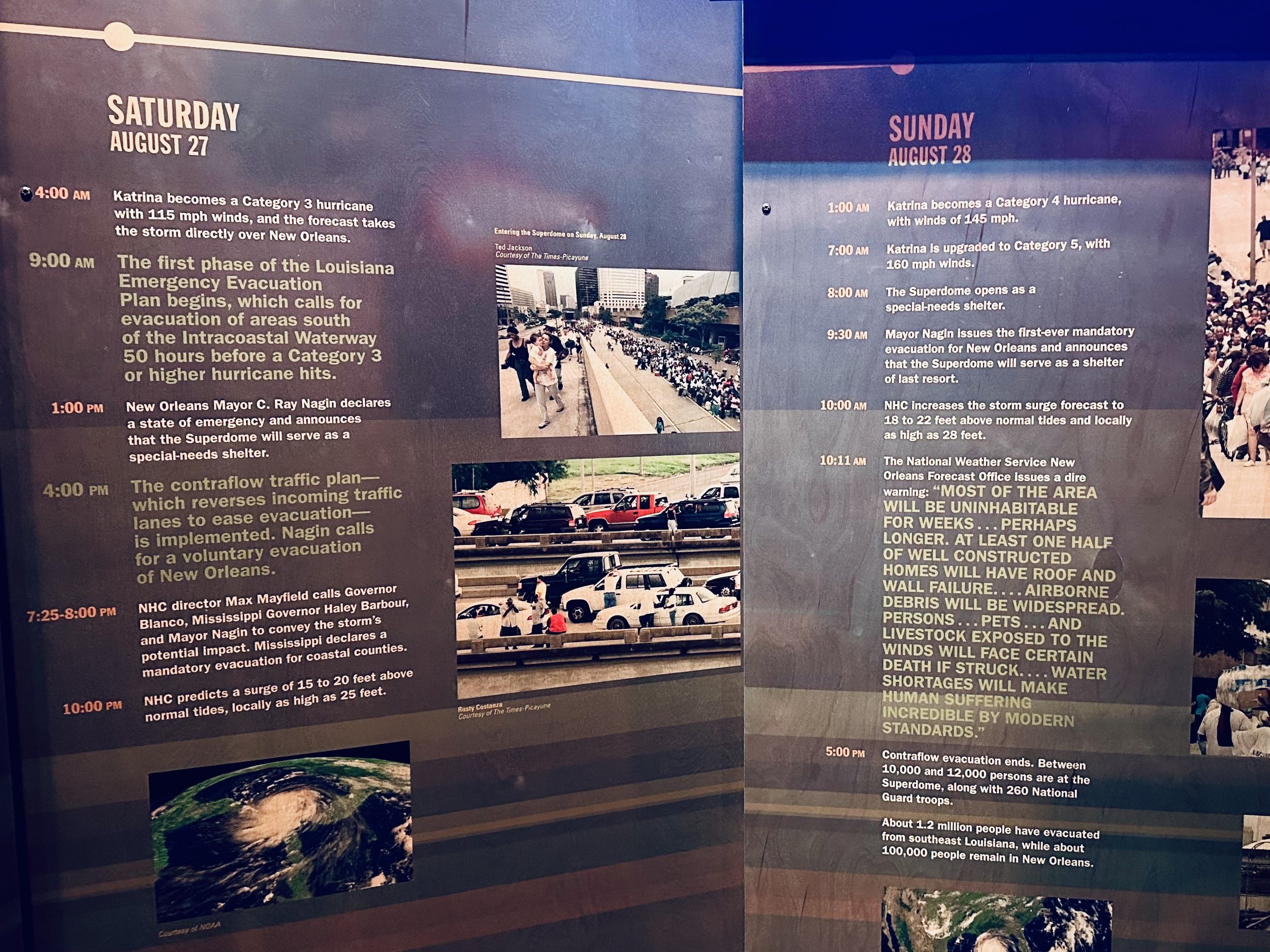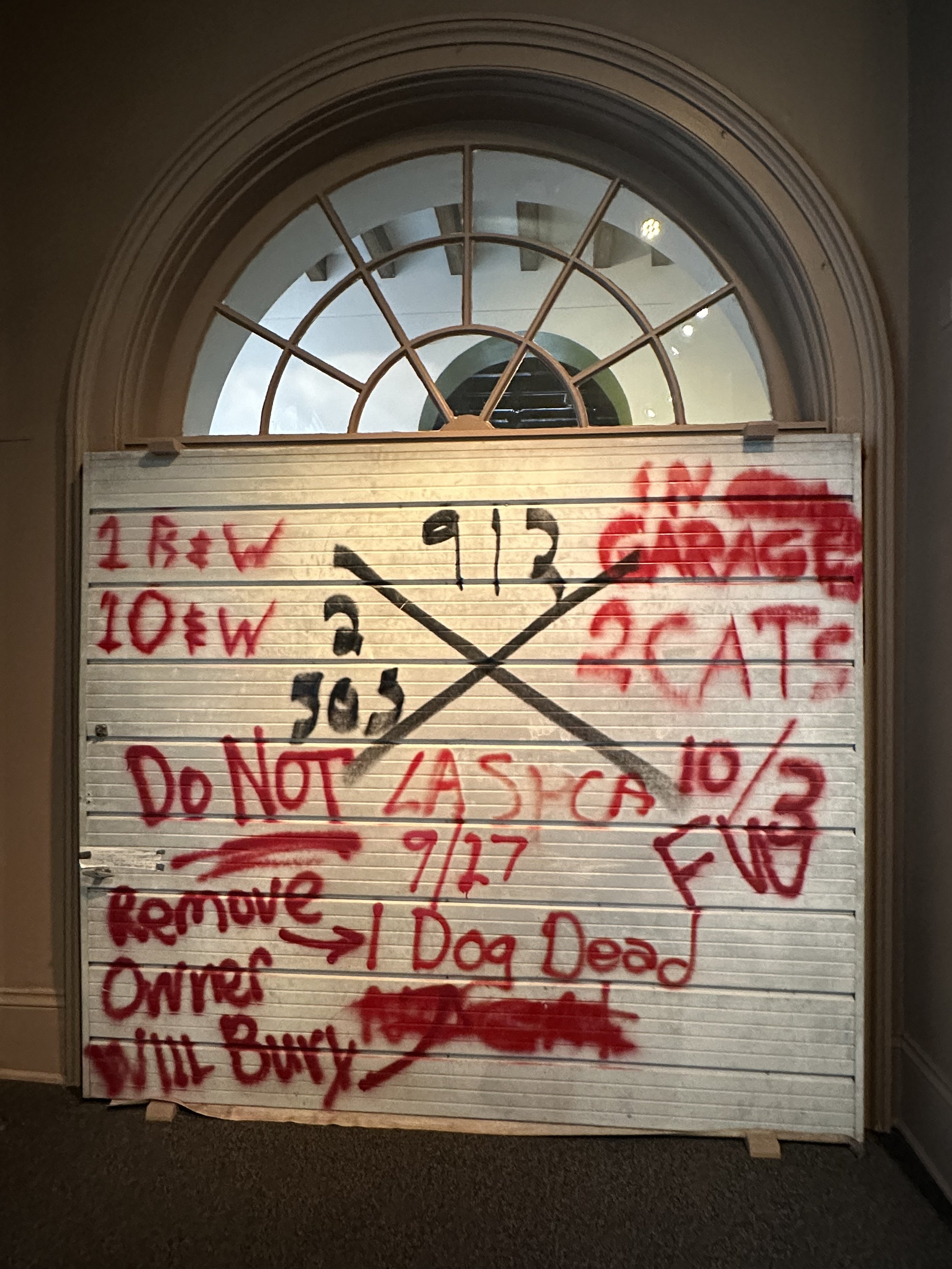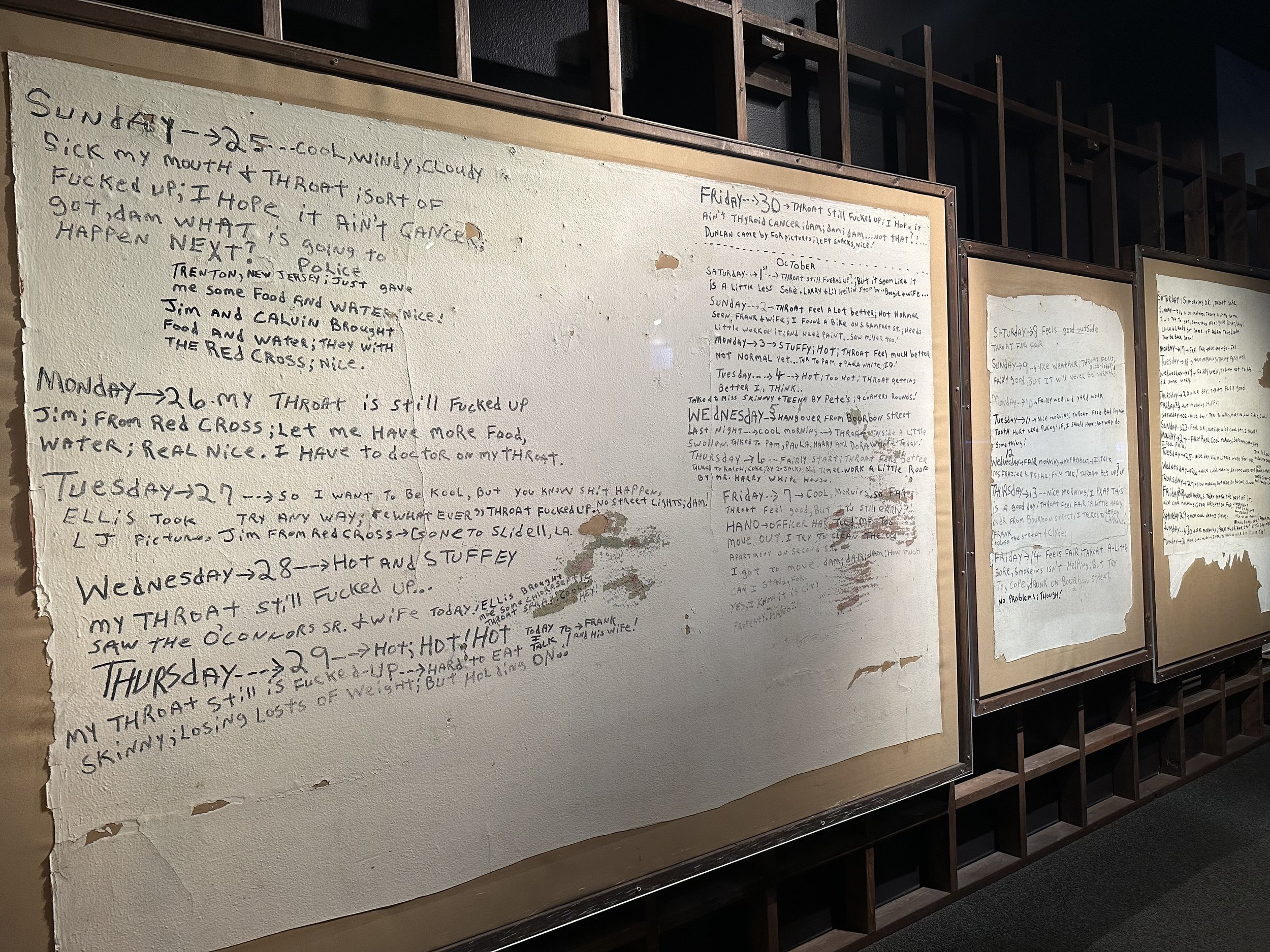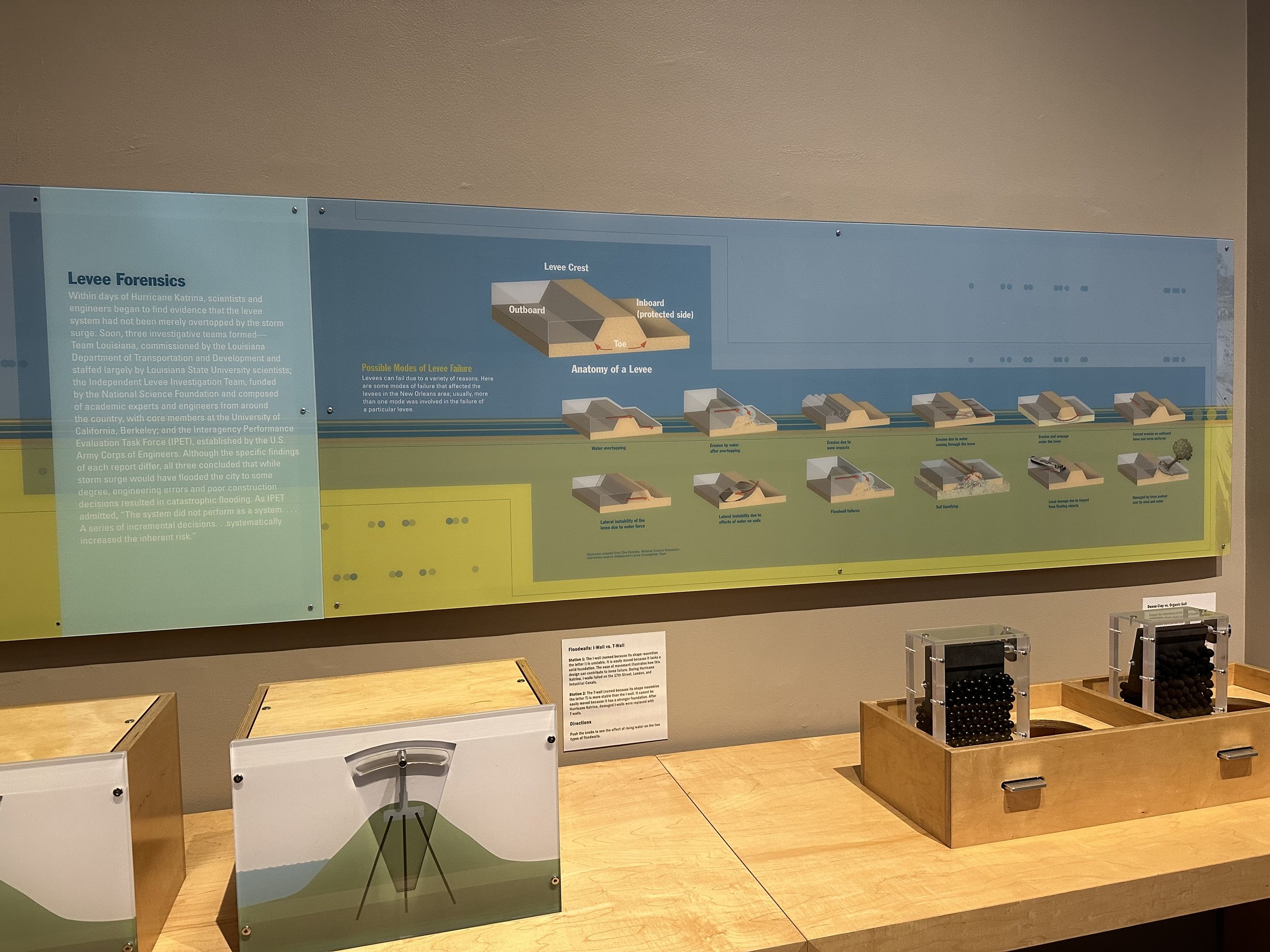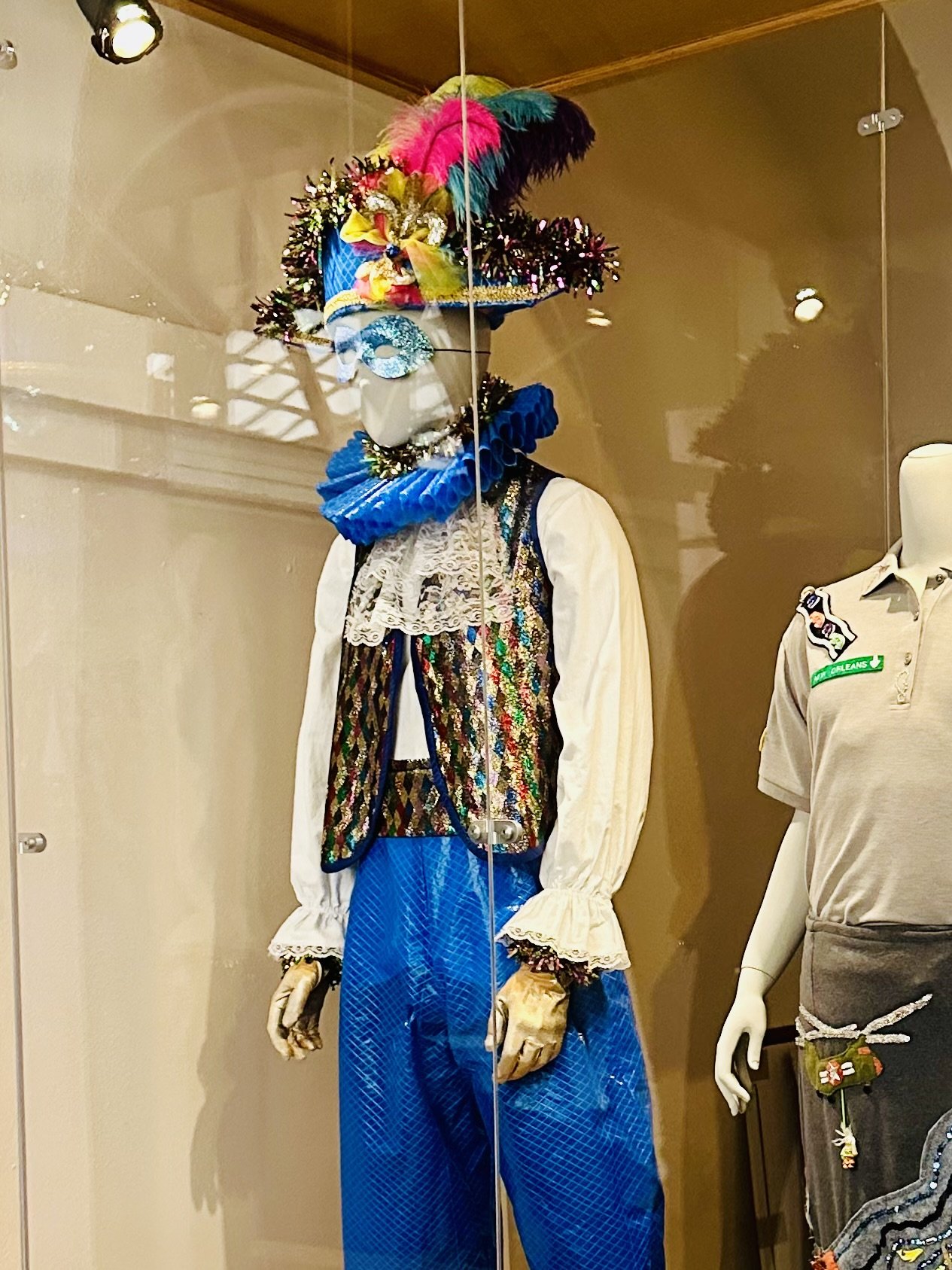The Presbytère: Katrina
The Presbytère is one of the two stone buildings flanking St. Louis Cathedral, overlooking Jackson Square in the French Quarter. Despite its name, the Presbytère was never used as a home for clergy, serving instead as a commercial building and courthouse. Today, it is part of the Louisiana State Museum.
The first floor exhibit was all about New Orleans before, during, and after Hurricane Katrina (August 2005). The storm caused numerous failures in the city’s levees and floodwalls. This combined natural and man-made disaster flooded 80% of the city, killed over a thousand, and displaced tens of thousands.
There were videos of the storm and audio recordings of survivors’ harrowing experiences. A mother and daughter rushed to the attic to escape rapidly rising floodwaters; they chopped through the roof with a newly-purchased hatchet and were rescued by boat. Others described being stranded for days amidst the horrifying stench and chaos at the Superdome, victims of miscommunication and unpreparedness of groups intended to bring order and relief. Around the world, people were in disbelief that the photos of post-Katrina devastation were coming from the United States.
There was a fascinating section showing how poor design of levees and floodwalls resulted in catastrophe. The lessons learned from Katrina have sparked countless improvements in weather forecasting, hurricane protection engineering, disaster preparedness, evacuation planning, and relief communications and logistics.
Overall, we left with a feeling of awe at the resiliency of the people of New Orleans, and a fervent hope that no city will ever experience a tragedy like Katrina.
